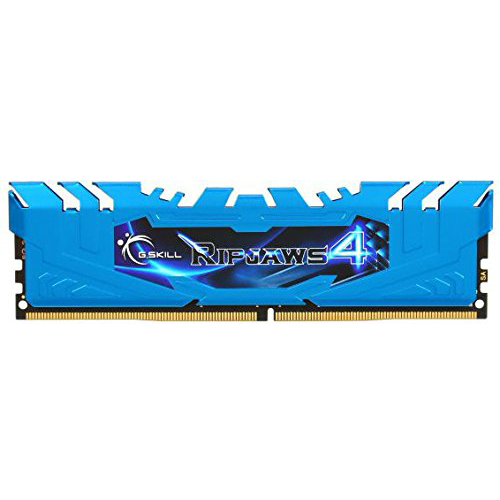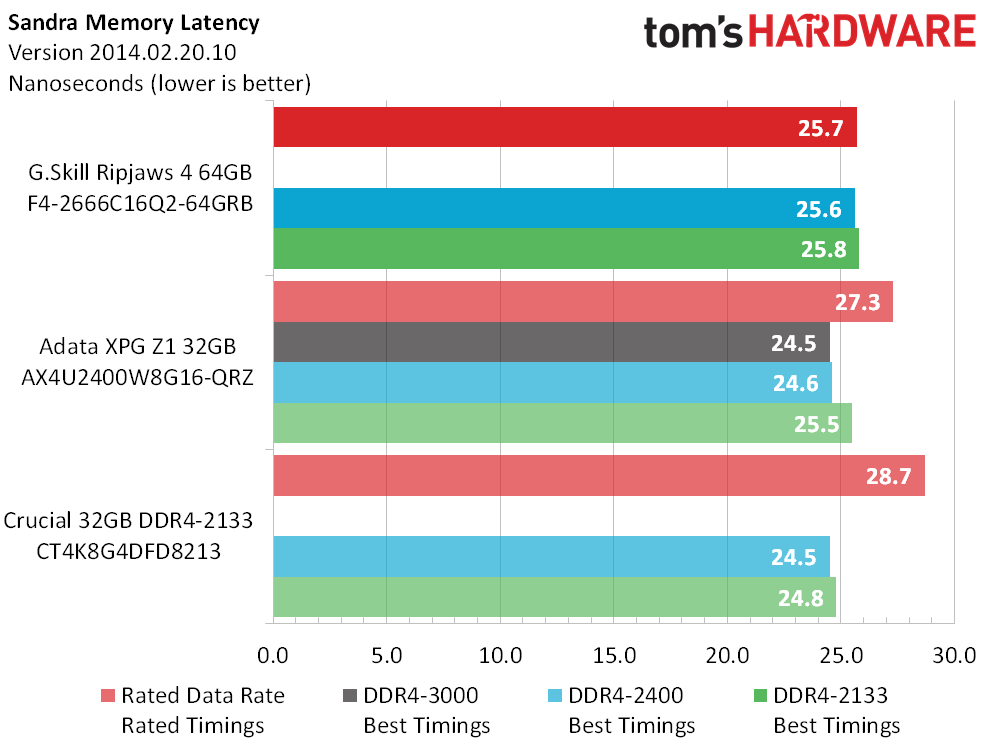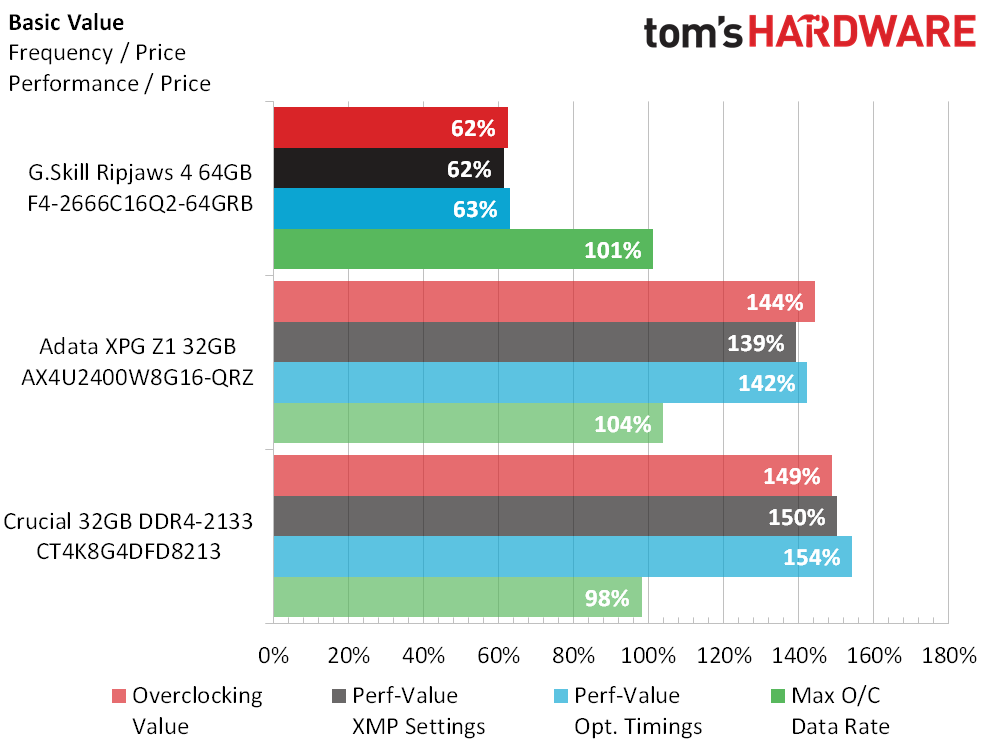G.Skill F4-2666C16Q2-64GRB DDR4-2666 Review
Why you can trust Tom's Hardware
Overclocking, Benchmarks And Analysis
I’m not going to bore our regular readers with a long discussion of memory multipliers and ratios, because I’ve already done that. But I will recap the basics. DDR has a data rate twice its clock frequency, and its clock rate is a BCLK multiple of its memory ratio (such as 8x) and the memory controller-to-CPU core ratio (either 1:1 or 4:3). Acceptable base clocks for this test are 100MHz (stock) and 125MHz (using a different multiplier).
The below chart says 1.35V and CAS 16, but I did try other settings, discovering that the optimal overclocking voltage for this set is 1.28V. That’s 1.30V according to my voltmeter, since Asus' motherboard has a +20mV bias. Getting there still required a 1.25x BCLK, as the non-validated (by Intel) 28x memory data rate (14x 100MHz BCLK at 1:1 IMC:Core ratio) is less stable than the 21.33x data rate (8x 100MHz BCLK at 4:3 IMC:Core).
The final 2815 MT/s result came at a 132MHz BCLK. The above chart doesn’t show any “clocked down from 125MHz” results because the only memory capable of using the next multiplier (9x) stopped at exactly the resulting speed (9x 125 x 4:3)
DDR4-2800 isn’t bad for eight DIMMs, but I did try loosening the timings to go even higher. Timings of 16-18-18-36 made G.Skill's kit boot at higher frequencies, but it wasn’t stable. Even switching from 2T to 3T didn’t help.
Benchmark settings and other hardware are retained from our first DDR4 comparison, allowing performance comparison between every DDR4 set tested after it. Today we’re comparing only the 32GB kits, since the lower-density modules of 16GB kits support tighter timings.
G.Skill's 64GB DDR4-2666 enables far more bandwidth than Adata’s DDR4-2400 at default settings, though Adata’s four-module set is able to reach the DDR4-3000 setting not attainable by G.Skill's eight modules. Just as significant is that it beat Adata’s set at DDR4-2400, even when the Adata set received C12 and 1T timing optimization.
Latencies are worse for the eight-DIMM set, but that’s the price you must pay to get 64GB right now.
Get Tom's Hardware's best news and in-depth reviews, straight to your inbox.
Grid 2 is memory-bottlenecked at 1080p and the High Quality preset. I’m sure nobody is going to fuss about differences beyond 200 FPS, but at least we have a data point for performance analysis.
Battlefield 4 appears to benefit from 64GB, though not by much.
One-second differences don’t mean much in benchmarks that round to the nearest second, so I’m calling 3ds Max rendering and WinRAR compression a virtual tie. The data will still be used in averages though.
The value chart is skewed towards lower-capacity sets because they have half as much RAM. Really, it just makes sense. But G.Skill also has a 32GB version of these parts, and the price for those would have raised the value score to 93%. Then again, the 32GB set would have also allowed tighter timings and higher clock frequencies, simply because it has half as many modules for the CPU’s memory controller to deal with.
An apples-to-apples comparison isn’t possible when a company is charging twice as much for twice as many apples, so let’s consider what we really get in G.Skill’s F4-2666C16Q2-64G memory kit. For around $900, we have the equivalent of two $440 sets, which are guaranteed to work together. That’s probably worth the extra $20.
-
SuperVeloce whoa, the price of those ddr4 sticks is still crazy high. For that price you can get the mighty 5960x and even if those 8 cores are "worth it" you better make a lot of money with the work you do on your computer.Reply
oh and your login system for forums and article comments is still pretty much broken -
henrik5150 I'd stay with ddr3 cuz the price, but alas, the new haswell-e mb requires ddr4!! Darn the price of technology!!!Reply -
redgarl Once again, no bench on games at 4k... it would tells a lot about something almost nobody know.Reply
We don`t really know what is the real impact of CPU and memory at UHD. Toms, just jump on the bandwaggon. -
Agera One Replyoh and your login system for forums and article comments is still pretty much broken
This. This irritates me every time. -
Tanquen I've replaced my current G.Skill 64GB DDR3 kit 4 times. They start to die about 9 months in.Reply -
beetlejuicegr ReplyI've replaced my current G.Skill 64GB DDR3 kit 4 times. They start to die about 9 months in.
I also see a decline in quality of many materials in new stocks of ram and hard disk drives and graphic cards! I think this is worthy enough for a research/article from Tom's.












